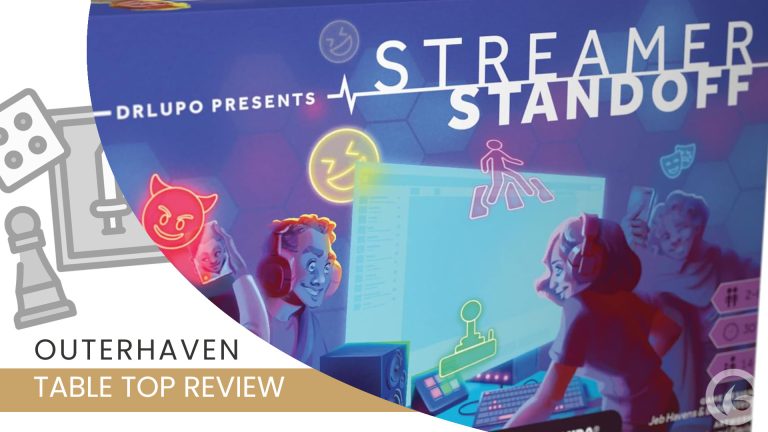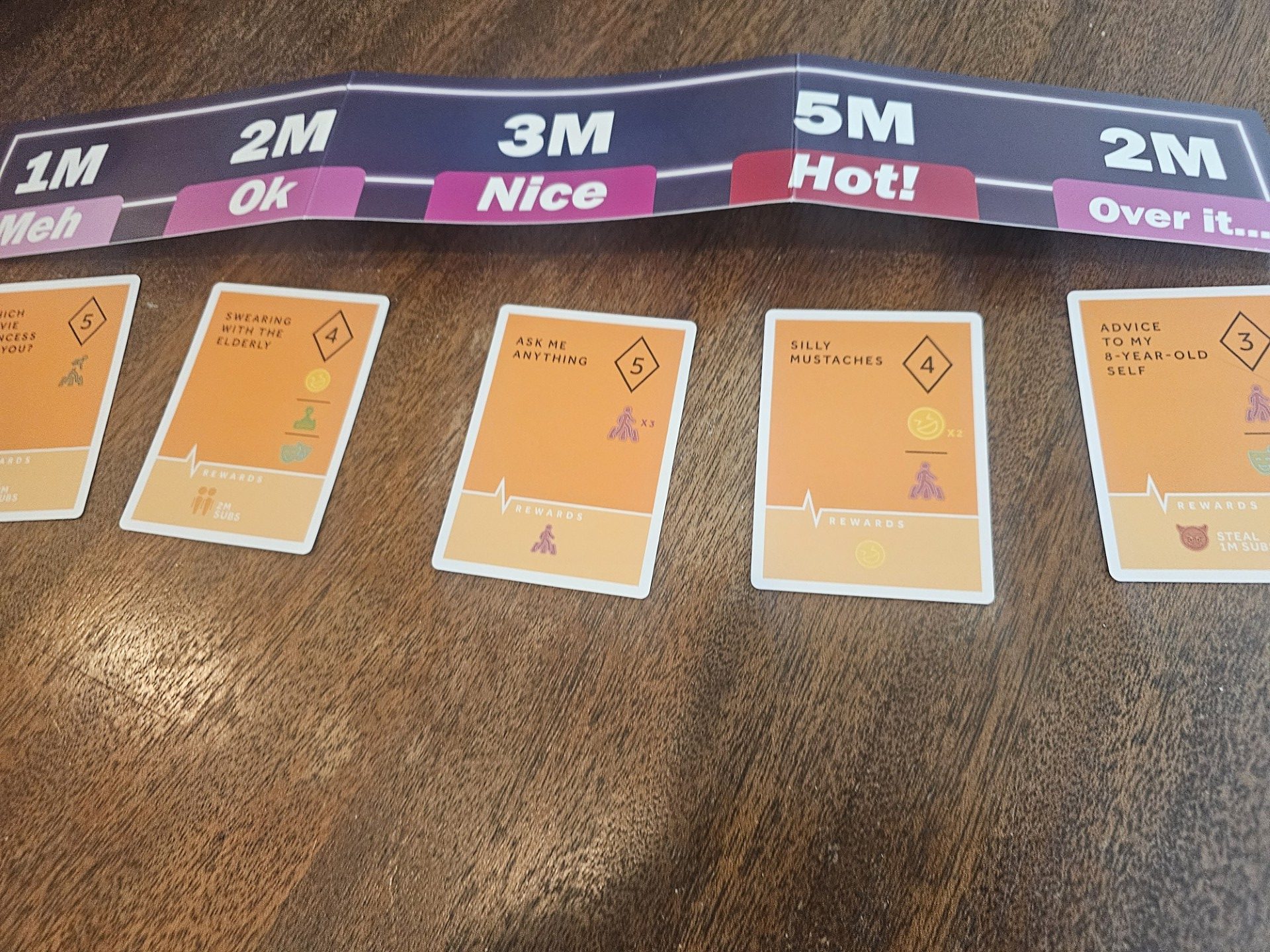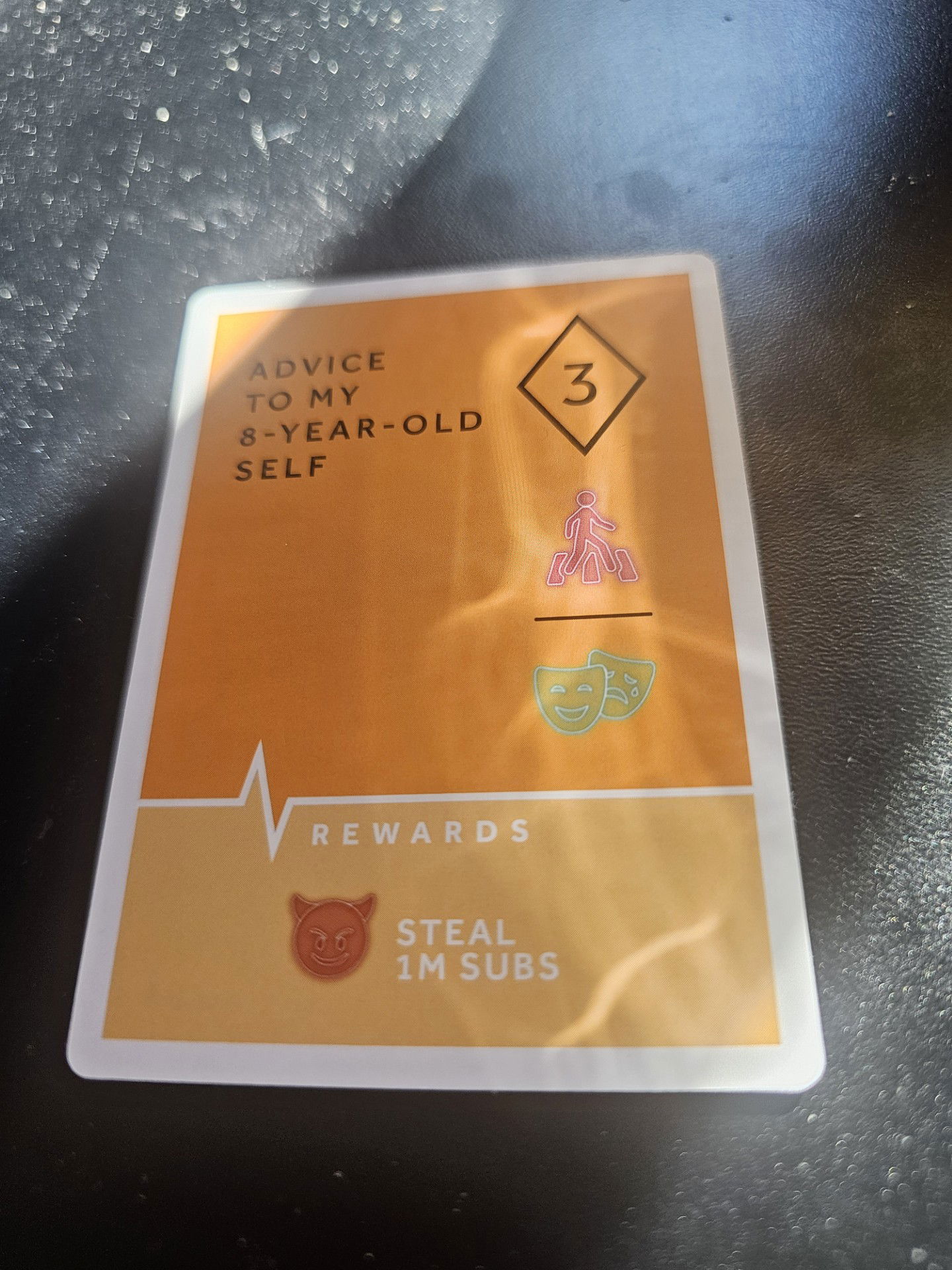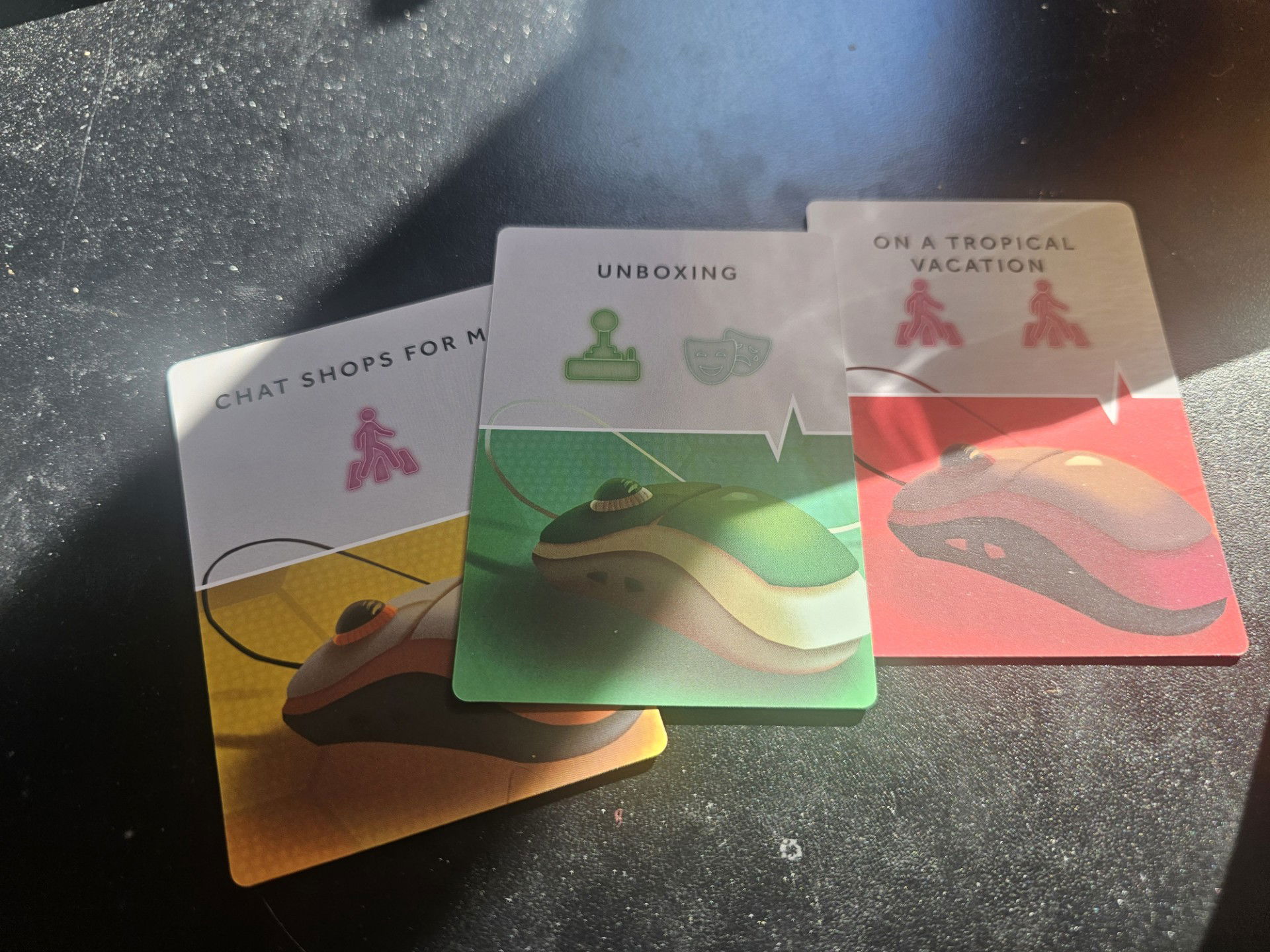Back in my high school days, I was always interested in getting big on YouTube or doing anything related to video editing. If I’d grown up in more recent years, I’d probably be even more into streaming. So when I saw a board game based on the world of streaming called Streamer Standoff, I was immediately intrigued.
Name: Streamer Standoff
Developed by: Maestro Media
Game Type: Board Game
Price: $19.99
Players: 2–5
Play Time: 30 minutes (average)
In Streamer Standoff, your goal is to be the first streamer to reach 20 million subscribers. You’re given a streamer mat that represents your channel persona, along with a clip marker to track your current subscriber count. Each turn consists of three steps: play a content card, claim a trend, or play an influence token. Finally, you draw back up to four cards.
Trends are displayed on the Trend Tracker. To claim one, you must fulfill its icon requirements using your content cards. Each card represents part of your video — and while you can only play one per turn, you can stack them to combine icons. Once your stack meets a trend’s requirements, you can “release” your content, claim that trend, and gain the number of subscribers listed on the Trend Tracker.
Balance in the Game
At first glance, Streamer Standoff might sound like pure RNG — whoever draws the best cards wins. But that’s not the case. The addition of influence tokens keeps things interesting. Each player starts with two and can earn more by playing single-icon content cards. These tokens can sabotage trends or disrupt your opponents’ progress. So if you’re falling behind, don’t give up — just throw a wrench into everyone else’s plans.
When you claim a trend card, you don’t just gain subscribers — you also earn a bonus reward. Many of these bonuses grant permanent icons tied to your account, which apply to future content cards. The game ramps up quickly as these bonuses stack, allowing you to chase trends faster and faster. Sometimes the rewards even include stealing subscribers from another player. The influence tokens, in particular, add a clever layer of strategy and chaos that I really appreciate.
Not All Is Sunny in Streamer Standoff
While the balance works well overall, the game struggles a bit with only two players. Once one person starts pulling ahead with trend bonuses, the other player has to work much harder to catch up. Since earning new influence tokens requires playing weaker cards, trying to slow the leader can often hurt you more than it helps. With three or more players, though, the game feels far more balanced — one player can disrupt the leader while another catches up.
Visually, I think the game could use more flair. The concept of making “content” is fun and creative, but the cards themselves are mostly text over a generic image. The trend cards are easy to read, but the overall presentation could benefit from more personality — some lively art or streamer-inspired visuals would make a big difference.
Living the Streaming Lifestyle
Overall, Streamer Standoff is a fun, lighthearted party game that’s best enjoyed with friends. It doesn’t capture every element of being a real streamer — there’s no networking or deep collaboration — but its simple loop is easy to learn and full of laughs. One of my favorite moments was piecing together ridiculous content combos just to claim a trend and imagining how that video would play out in real life.
Even with its lackluster visuals and some balance issues in two-player sessions, Streamer Standoff is still worth adding to your collection. It’s quick, clever, and perfect for a 30-minute game night session filled with friendly chaos.
You can buy Streamer Standoff at the Maestro Media website or from other retailers near you.
Summary
Streamer Standoff is a game all about becoming the first streamer to hit 20 million subscribers. It is a fun time with friends, even if I wish it had more art in the game.
Pros
- Game plays well, addictive for a short burst of time
- With multiple players, it becomes a game where you can mess with the other players on
- Simple to start, simple to play
Cons
- Cards could use more art
- Two players are harder to have fun with, might look into making your own two-player mode





